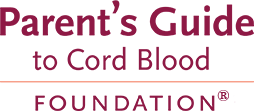You are here
News
2014
Apr 2014 The Hearing Loss Association of America® (HLAA) is the nation's foremost membership and advocacy organization for people with hearing loss.
Apr 2014 This simple question has been lingering unanswered over private cord blood banks around the world for years. Despite compelling data on the growing therapeutic use of cord blood, both in terms of treatable diseases and numbers of therapies, often medical doctors are still reluctant to embrace the value of family cord blood banking. In many countries, such as Brazil, this sector is still plagued with mostly unfounded controversy, such as the "public versus private" banking debate.
Mar 2014 Borne's goal is to make childbirth safer and promote lifelong health for mothers and babies. In the UK, more than 1 in 10 babies are born too soon.
Mar 2014 Each year in the US, nearly 500,000 babies are born premature. That's 1 of every 8 infants born in the United States. A premature birth is when a baby is born before 37 completed weeks of pregnancy. A full-term pregnancy is 40 weeks. In almost all countries with reliable data, preterm birth rates are increasing.
Mar 2014 Babies born prematurely often have serious medical complications that impact their lungs, brain, kidneys and intestinal systems. Stem cells in the umbilical cord blood and tissue, collected after the baby is born, may offer new treatment options for these premature babies. In an effort to understand the potential for the babies' newborn stem cells to be used in such treatments, ViaCord established a pilot program in partnership with Miracle Babies charity and Sharp Mary Birch Hospital in San Diego.
Feb 2014 There is growing acceptance in the medical community that stem cells derived from cord blood have value as a therapy for pediatric neurologic injury. But what financial hurdles do parents face when they attempt to access that value for their children? In this article we present case studies of the out-of-pocket costs that parents face when they use their child's own (autologous) cord blood as therapy for cerebral palsy at Duke University Medical Center.
Feb 2014 There should be thousands of children worldwide who already have a cerebral palsy diagnosis and have their own cord blood in storage, based on the epidemiology of the disorder and the inventory of cord blood in family banks. If autologous cord blood therapy for cerebral palsy is accepted as a standard of care, those children are the immediate potential market for therapy. If therapy with matched cord blood donations is also accepted, even more children will potentially have access, but the cost of therapy will go up dramatically, and the search for a matching cord blood unit will complicate their ability to access this therapy.
Jan 2014 When someone thinks to the potential of regenerative medicine, the main idea is that of immature cells which may transdifferentiate towards a mature cell type, which may be used to repopulate a target organ cells, and thereby treat human diseases. This concept drives a lot of research undertaken worldwide.
Wharton's jelly mesenchymal stem cells (WJ-MSC) are not an exception to this rule: They are derived from the tissue constituting the bulk of the umbilical cord (1). Applications of these cells, often supported by data from several in vivo models, range from the nervous system to the liver, pancreas, heart and other organs in the body (2-4).
Jan 2014 Most scientists think of mesenchymal stromal cells (MSC, or mesenchymal stem cells) as being associated with bone marrow or adipose tissue. However, new explorations of MSC derived from umbilical cord tissue (UC-MSC) promises abundance and great therapeutic value of these cells.
Jan 2014 Recently, two exciting studies in China were published that highlight the co-transplantation of human umbilical cord mesenchymal stem cells (UC-MSC) and human umbilical cord blood hematopoietic stem cells (CB-HSC) into human patients. These papers provide some of the first human data to support a scientific hypothesis that was first suggested at the 7th International Cord Blood Society (ICBS) Congress in 2004 (1).










